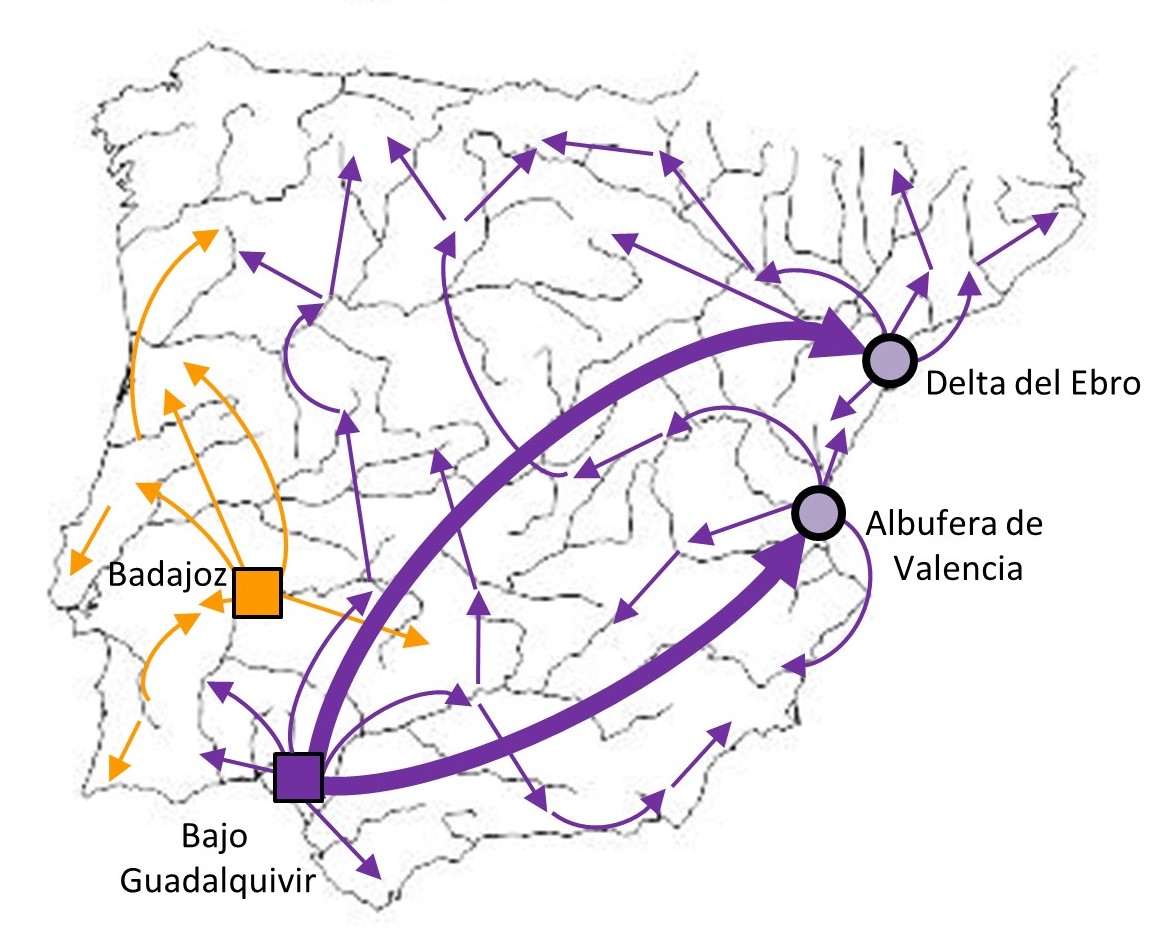Patterns of genetic diversity in invasive populations can be modulated by a range of factors acting at different stages of the invasion process, including the genetic composition of the source population(s), the introduction history (e.g. propagule pressure), the environmental suitability of recipient areas, and the features of secondary introductions. The North American red swamp crayfish, Procambarus clarkii, is one of the most widely introduced freshwater species worldwide. It was legally introduced into Spain twice, near the city of Badajoz in 1973 and in the Guadalquivir marshes in 1974. Thereafter the species rapidly colonised almost the entire Iberian Peninsula. Seven nuclear microsatellites were used to describe the genetic diversity and structure of 28 locations distributed across the Iberian Peninsula and to explain the expansion process of the red swamp crayfish. Additionally, the relationship between environmental suitability and genetic diversity of the studied locations were analysed. The red swamp crayfish had a clear spatial genetic structure in the Iberian Peninsula, probably determined by the two independent introduction events in the 1970s, which produced two main clusters separated spatially, one of which was dominant in Portugal and the other in Spain. The human-mediated dispersal process seemed to have involved invasion hubs, hosting highly genetically diverse areas and acting as sources for subsequent introductions. Genetic diversity also tended to be higher in more suitable environments across the Iberian Peninsula. These results showed that the complex and human-mediated expansion of the red swamp crayfish in the Iberian Peninsula has involved several long- and short-distance movements and that both ecological and anthropogenic factors have shaped the genetic diversity patterns resulting from this invasion process. Early detection of potential invasion hubs may help to halt multiple short-distance translocations and thus the rapid expansion of highly prolific invasive species over non-native areas. informacion[at]ebd.csic.es: Acevedo-Limón et al (2020) Historical, human, and environmental drivers of genetic diversity in the red swamp crayfish (Procambarus clarkii) invading the Iberian Peninsula. Freshwater Biology. Doi 10.1111/fwb.13513
https://onlinelibrary.wiley.com/doi/full/10.1111/fwb.13513








 ¡Abierta convocatoria para proyectos de investigación en la ICTS- Doñana!
¡Abierta convocatoria para proyectos de investigación en la ICTS- Doñana!


